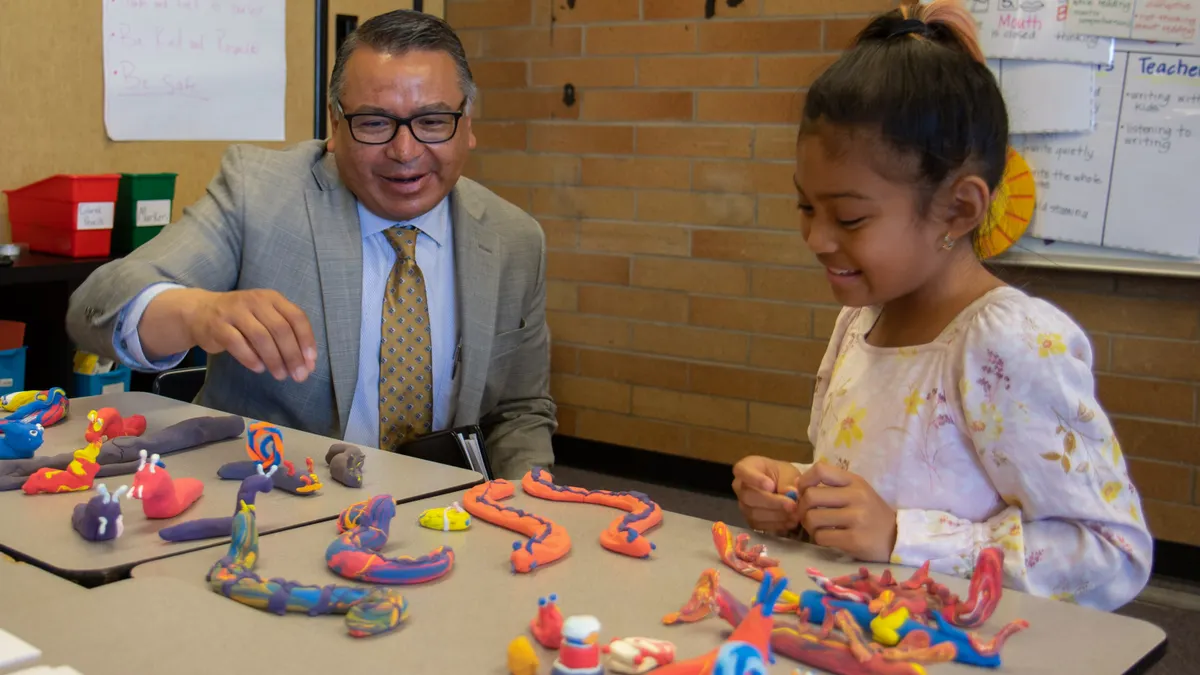Virginia Beach City Schools began a digital transformation in its 85 schools three years ago, selecting 12 "anchor schools" to lead the way. By next year, all 76,000 of its students should have their own device — primarily Chromebooks with the occasional Windows laptop — under a 1:1 model, and all financed by "repurposing" funds saved by abandoning textbooks and paper in favor of digital solutions.
“We can’t ask our teachers to do new things if we as school leaders sit there and do the same old, same old,” David French, principal of Glenwood Elementary School, said last week in a Future of Education Technology Conference (FETC) session on meeting the needs of today's learners. “If you know your 'why,' your 'what' has more purpose and power.”
In a few short years, he noted, every K-12 student will be from the 21st century but none of their teachers will be. The student body and teachers will be from different centuries. Drawing from Dave Burgess' "Teach Like A Pirate," he told attendees that providing today's students with an uncommon learning experience will require uncommon effort and attitude.
"You can’t teach them with yesterday’s lessons and expect them to be ready for tomorrow," he said, adding that the traditional classroom, with its worksheets and physical textbooks, isn't what's going to prepare students to go to Mars or cure cancer in the long run.
For French, this switch flipped when he learned more about why students like to play games. Games, he said, provide an environment where we get to try without penalty because failure is part of the journey. Everyone can be a hero, and games are goal-oriented and provide, in some ways, a representation of the world students want to be a part of. They’re social and provide positive stress.
School leaders, he said, must tap into students’ need to be challenged in that way. Learning must be made relevant, with a connection to real-world applications and interests. Educators must look at learning through students’ eyes and see that school shouldn’t be a place students go "to watch old people work."
"Would kids show up to your classroom if they didn’t have to?" he asked.
Of course, engagement must also be purposeful, with learning targets implemented alongside technology so there's responsibility and ownership of learning in students' hands during the process, he said. And pedagogy must take priority over technology, which is best treated as more tools in teachers' toolboxes than as the be-all, end-all solution.
Lead by example
"As a principal, I’m not willing to ask a teacher to do something I’m not willing to do," French said, advising attendees to take baby steps and not start with too much in mind.
A good place to do so: Joining Twitter and becoming a connected educator. Educators can follow hashtags like #EdChat or #PrincipalChat to further surround themselves with people on the same mission, and who are dreaming bigger and can help them grow.
Building leaders must know they need to evolve at the same rate at which teachers are being asked to evolve. French said that the principal as tech leader should establish vision and goals, carry the tech banner in the school, model the use of technology and support its use, engage in professional development activities focusing on tech use in student learning, be an advocate for tech, and create a digital-age learning culture. The ISTE Standards for Administrators, he noted, provide a good guideline for this.
"The magic happens outside of your comfort zone," French said.
Jennifer Haws, now in her second year as assistant principal at Glenwood, also detailed the value of constant and consistent communication with both teachers and parents in this process.
Blogs and newsletters, she said, can do a lot to sell the "why" of classroom tech to parents. French, for example, has a Scoop.It page called "Innovative Teaching."
For teachers, newsletters are also a valuable outreach tool — and they can be forwarded on to other building and district leaders to keep them in the loop on what's happening at individual schools.
But perhaps most notably, French has reorganized committees and other meetings within the building to a digital format to avoid holding them during the hours after school. This is done via Microsoft's Office Mix, and for follow-up, committee members can create Google Docs with notes for others.
Haws also noted the further benefits of using G-Suite and for educators to become Google-certified. Moving data to spreadsheets within Google Sheets, for example, can allow educators to use projectors to create “data walls” during parent meetings so that parents can better see the data being discussed as they go along.
French closed by elaborating on the power of professional development, telling attendees that he likes to use PD money to send as many people as possible to shows like FETC or the Virginia Society for Technology in Education, because those educators then become ambassadors to others in the building and spread what they’ve learned at the conferences. He also noted that weekly grade-level collaboration between educators serves as a powerful platform for ongoing learning.
“If you haven’t failed in the classroom recently," he said, "you are probably playing it too safe.”

















